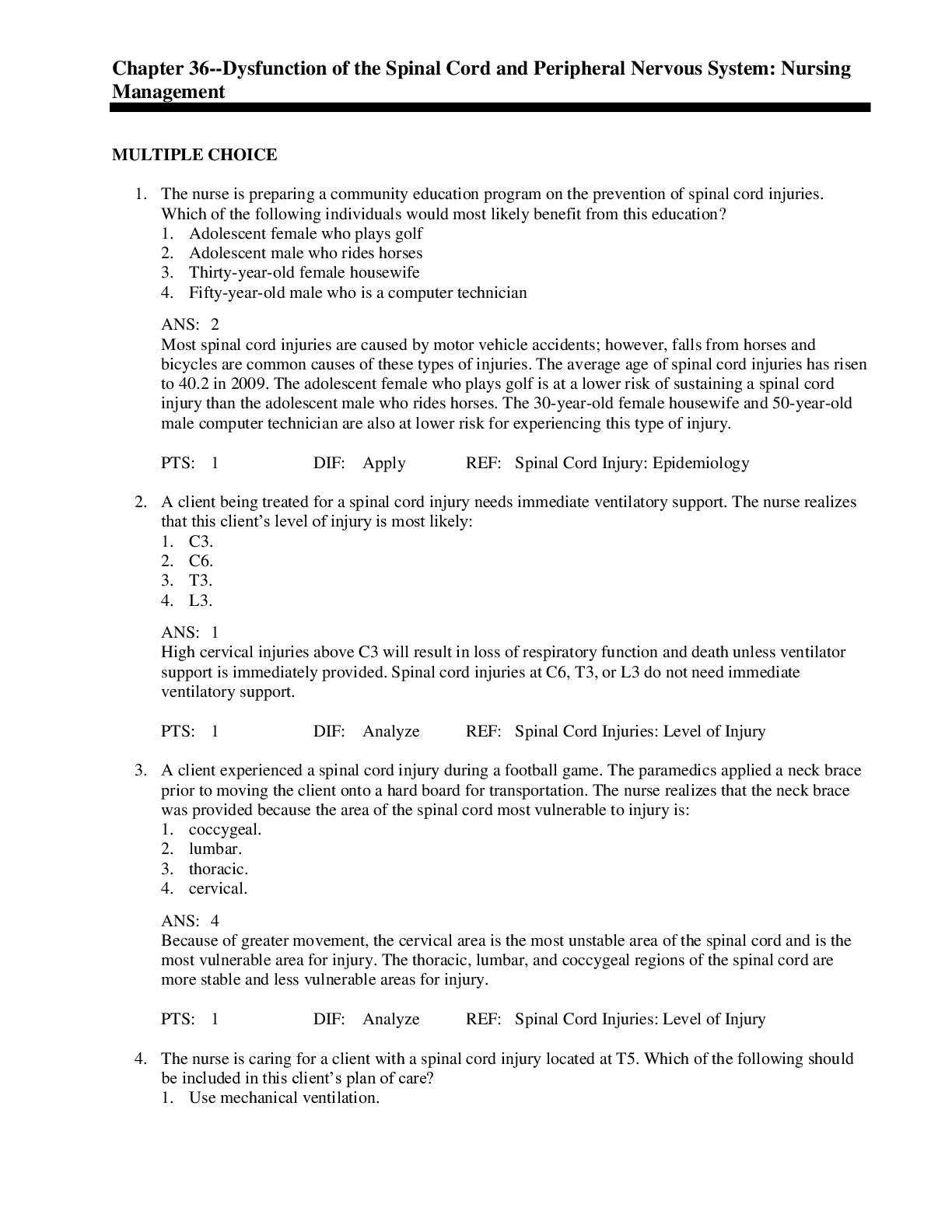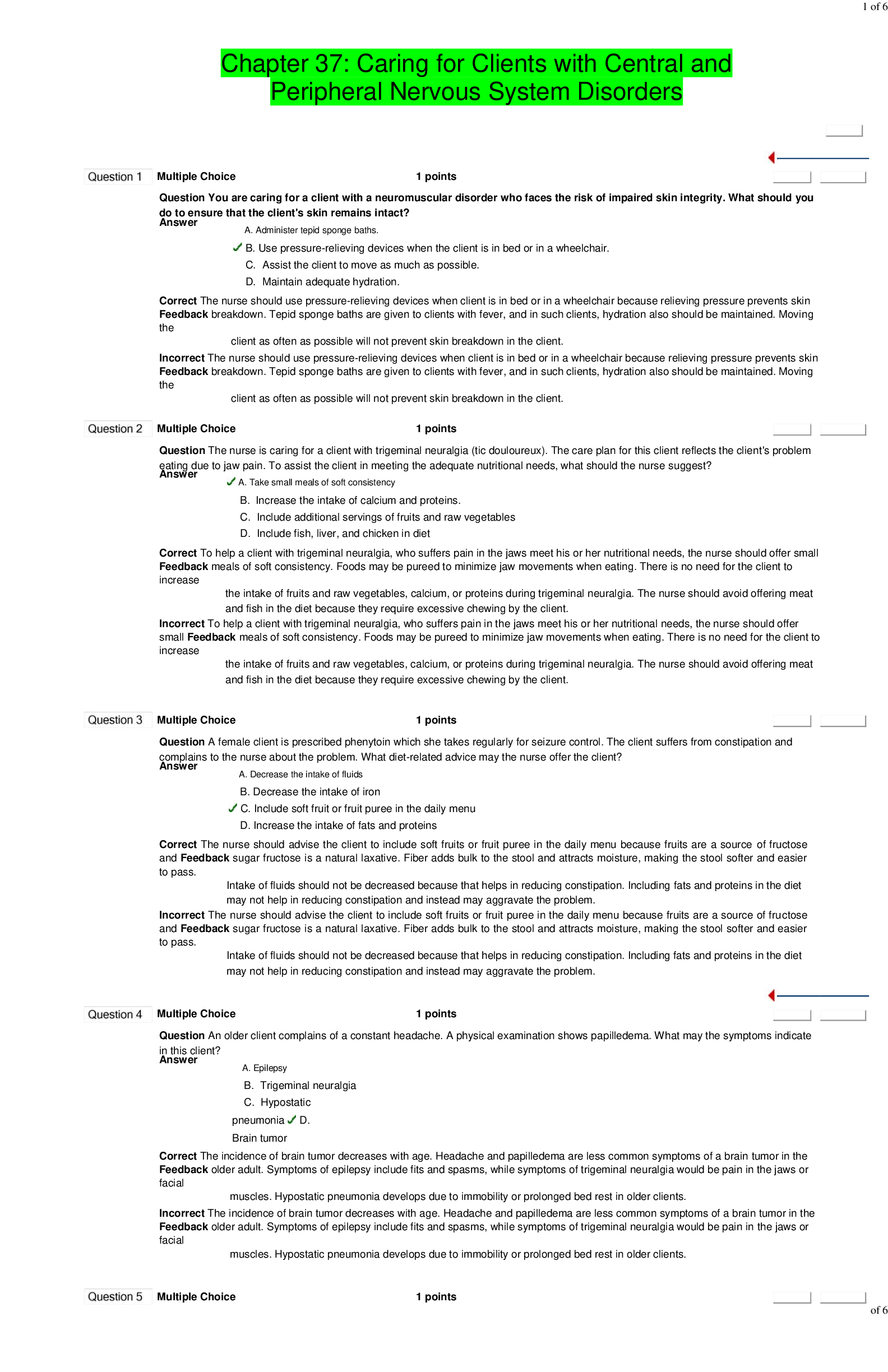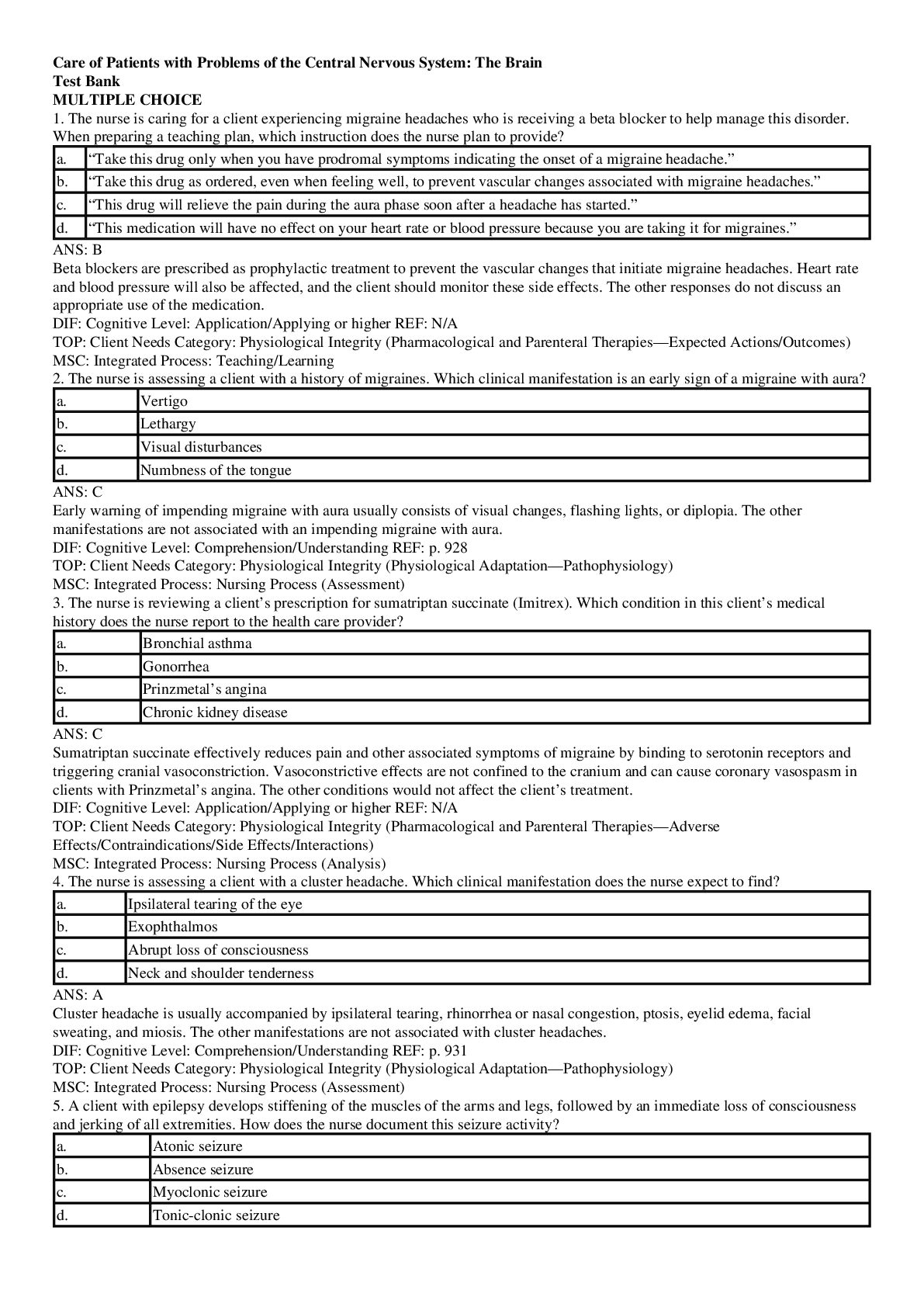*NURSING > QUESTIONS & ANSWERS > NURS 8022 Chapter 16: Disorders of the Central and Peripheral Nervous Systems and the Neuromuscular (All)
NURS 8022 Chapter 16: Disorders of the Central and Peripheral Nervous Systems and the Neuromuscular Junction
Document Content and Description Below
1. A nurse is preparing to teach staff about the most common type of traumatic brain injury. Which type of traumatic brain injury should the nurse discuss? a. Penetrating trauma b. Diffuse axonal i... njury c. Focal brain injury d. Concussion ANS: D A concussion is the most common type of traumatic brain injury. A concussion is a much more common brain injury than penetrating trauma, diffuse axonal injury, or focal injury. REF: p. 394 2. A coup injury resulting from a blow to the frontal portion of the skull would occur in which region of the brain? a. Frontal b. Temporal c. Parietal d. Occipital ANS: A When there is force applied to the skull, an injury may occur to the corresponding location on the brain. The injury may be coup (injury at site of impact) or contrecoup (injury from brain rebounding and hitting opposite side of skull). REF: pp. 390-391 3. What is the main source of bleeding in extradural (epidural) hematomas? a. Arterial b. Venous c. Capillary d. Sinus ANS: A An artery is the source of bleeding in 85% of extradural hematomas. The bleeding associated with an extradural hematoma is not a result of damage to a vein, a capillary, or a sinus. REF: p. 391 4. A 69-year-old patient with a history of alcohol abuse presents to the emergency room (ER) after a month-long episode of headaches and confusion. The patient’s history and symptomology support which medical diagnosis? a. Concussion b. Chronic subdural hematomac. Epidural hematoma d. Subacute subdural hematoma ANS: B Chronic subdural hematomas are commonly found in persons who abuse alcohol and develop over weeks to months. A concussion is more acute in nature. Epidural hematomas are not associated with the patient’s history or symptoms. Subacute subdural hematomas present with confusion but are more acute in nature. REF: p. 393 5. Immediately after being struck by a motor vehicle, a patient is unconscious, but the patient regains consciousness before arriving at the hospital and appears alert and oriented. The next morning the patient is confused and demonstrates impaired responsiveness. The patient’s history and symptoms support which medical diagnosis? a. Mild concussion b. Subdural hematoma c. Extradural (epidural) hematoma d. Mild diffuse axonal injury ANS: C Individuals with extradural hematomas lose consciousness at injury; one third then become lucid for a few minutes to a few days. Mild concussion is characterized by immediate but transitory confusion that lasts for one to several minutes, possibly with amnesia for events preceding the trauma. Subdural hematomas begin with headache, drowsiness, restlessness or agitation, slowed cognition, and confusion. These symptoms worsen over time and progress to loss of consciousness, respiratory pattern changes, and pupillary dilation. Individuals with mild diffuse axonal injury display decerebrate or decorticate posturing and may experience prolonged periods of stupor or restlessness. REF: p. 392 6. Which assessment finding by the nurse characterizes a mild concussion? a. A brief loss of consciousness b. Significant behavioral changes c. Retrograde amnesia d. Permanent confusion ANS: C Mild concussion is characterized by immediate but transitory confusion that lasts for one to several minutes, possibly with amnesia for events preceding the trauma. Individuals with extradural hematomas lose consciousness at injury; one third then become lucid for a few minutes to a few days. Persons with diffuse brain injury demonstrate behavioral changes. Individuals with a mild concussion experience transient, not permanent, confusion. REF: p. 394 7. A CT scan reveals that a patient has an open basilar skull fracture. Which major complication should the nurse observe for in this patient? a. Hematoma formation b. Meningeal infection [Show More]
Last updated: 2 years ago
Preview 1 out of 12 pages
.png)
Buy this document to get the full access instantly
Instant Download Access after purchase
Buy NowInstant download
We Accept:

Reviews( 0 )
$9.00
Can't find what you want? Try our AI powered Search
Document information
Connected school, study & course
About the document
Uploaded On
Jul 15, 2021
Number of pages
12
Written in
Additional information
This document has been written for:
Uploaded
Jul 15, 2021
Downloads
0
Views
73
.png)








.png)

.png)











